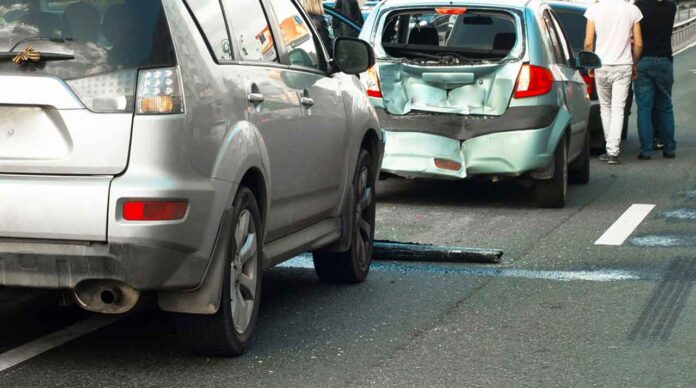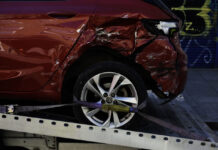You likely encounter numerous potential hazards as you navigate the bustling streets and highways. Among these, hit and run accidents stand out as particularly troubling incidents. These crashes, where one party flees the scene, leave victims feeling vulnerable and frustrated. Understanding the common causes behind irresponsible behavior, such as hit and run car accidents, can help you stay vigilant. In this article, we’ll explore the top five reasons drivers choose to flee after an accident.
Distracted Driving
Distracted driving is a leading cause of hit and run accidents, putting countless lives at risk on our roads. When drivers take their attention away from driving, they significantly increase the likelihood of causing a collision and fleeing the scene.
Types of Distractions:
- Visual distractions: Taking your eyes off the road, even briefly, can have devastating consequences. This includes checking your phone, looking at GPS directions, or rubbernecking at roadside incidents.
- Manual distractions: Removing your hands from the steering wheel reduces your ability to control the vehicle. Examples include eating, drinking, or adjusting the radio or climate controls while driving.
- Cognitive distractions: Mental distractions that take your mind off driving are equally dangerous. Engaging in phone conversations, daydreaming, or becoming overly emotional can impair your judgment and reaction time.
The Dangers of Texting While Driving
Texting while driving is particularly hazardous as it combines all three distractions. When you text, you’re visually focused on your phone, manually manipulating it, and cognitively engaged in the conversation. This perfect storm of distraction dramatically increases the risk of causing a hit and run accident.
Consequences of Impaired Driving
Impaired drivers who cause hit and run accidents face severe legal penalties, including fines, license suspension, and potential jail time. These consequences are often more severe than if the driver had remained at the scene. Additionally, impaired driving resulting in a hit and run can lead to civil lawsuits, increased insurance premiums, and long-lasting personal and professional repercussions.
Reckless Driving
Speeding and Aggressive Maneuvers
One of the most common forms of reckless driving is excessive speeding. When traveling at high speeds, your reaction time decreases dramatically, making it difficult to avoid sudden obstacles or changes in traffic flow. Additionally, aggressive maneuvers like weaving between lanes, tailgating, and running red lights put you at risk and endanger other motorists and pedestrians.
Impaired Driving
Driving under the influence of alcohol or drugs is perhaps the most dangerous form of reckless driving. Impaired drivers have significantly reduced cognitive function, impaired judgment, and slower reflexes. This combination often leads to severe accidents, and the fear of legal repercussions can prompt these individuals to leave the scene, compounding their offenses.
Failing to Obey Traffic Signals and Signs
The Dangers of Disregarding Road Rules
Traffic signals and signs are crucial components of road safety, designed to regulate the flow of vehicles and protect all road users. Unfortunately, some drivers ignore these vital indicators, leading to dangerous situations that can result in hit-and-run accidents. When motorists run red lights, disregard stop signs, or fail to yield right-of-way, they significantly increase the risk of collisions with other vehicles, pedestrians, or cyclists.
The Hit-and-Run Factor
When drivers knowingly violate traffic signals and signs, they may be more likely to flee the scene of an accident. This could be due to fear of legal consequences, lack of insurance, or other factors such as intoxication. The combination of reckless driving and the decision to leave the scene makes these incidents particularly troubling for victims and law enforcement alike.
Fleeing the Scene to Avoid Penalties
Evading Legal Consequences
When drivers flee the scene of an accident, they’re often attempting to escape the legal ramifications of their actions. This decision, while misguided, is typically driven by fear of potential penalties such as fines, license suspension, or even jail time.
Some motorists may drive without a valid license or insurance, compounding their anxiety about facing authorities. Others might be under the influence of alcohol or drugs, further motivating them to evade responsibility.
Misunderstanding of the Law
Many hit-and-run incidents stem from a lack of understanding about legal obligations following an accident. Some drivers mistakenly believe they can leave if they aren’t at fault or if the damage seems minor. However, most jurisdictions require all involved parties to stop, exchange information, and report the incident, regardless of fault or damage severity.
Final Thoughts
Understanding the common causes of hit and run accidents can help you stay vigilant on the roads. By being aware of impaired driving, distracted driving, panic reactions, lack of insurance, and fear of consequences, you can better protect yourself and others. Remember always to drive defensively, maintain proper insurance coverage, and know how to respond if you witness or are involved in an accident.







